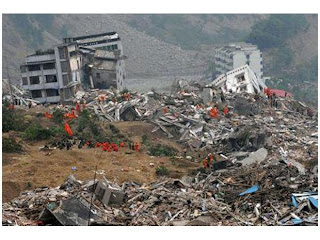January 12, 2010 a devastating 7.0mw earthquake hit one of the poorest most poverty stricken country in the world, Haiti. The epicenter was near the town of Leogane, 16 miles west of Port-au-Prince, Haiti’s capital. Haiti was shaken to its roots killing approximately 300,000 people and depleting farmland and cities. Following the quake violence, disease outbreak, and a migration had begun the long road to recovery for Haiti.
Dominican and Haitian affairs were never quiet settled to a point of amnesty, but after the earthquake Haitians were freely allowed to immigrate to the Republic. Meaning the authorities no longer deported illegal Haitian immigrants, because they acted as a relief sanctuary providing aid for health, water, electricity, and infrastructure. Disease, violence and battered cities consumed Haiti, but in the Dominican Republic these factors were absent causing a pull factor on the Haitian people to thrive in a new country and start a new better life in another country.
Cholera disease struck Haiti killing roughly 3,500 people causing a pull factor to escape the fatal disease to the Dominican Republic. The Dominican Republic shifted into a protective isolated gear on Monday January 3, 2010 having put into effect the deportation of all illegal Haitian immigrants. Roadblocks, deportation, and medical organizations such as the World Health Organization (WHO) and the Medecins Sans Frontiers (MSF) are some of the protective measures and eradication efforts.
Protests against peacemakers resulted in two Haitian deaths in which the community accused the UN peacemakers of bringing cholera to Haiti. Protest of hostility was among the people and peacemakers from Nepal in which protest continued thereafter the two deaths. The president of Haiti Rene Preval had accused angered Haitian groups of capitalizing on the epidemic increasing controversy against the UN mission. Violence throughout the broken society was a pull factor to leave Haiti in search of a safe place free of murder.
Deforestation had been a problem in Haiti since the 1950’s but has recently become amplified after the 2010 earthquakes. Fewer trees will define constant natural disasters and target many environmental factors. Because trees hold soil in place, hurricanes and earthquakes will rip apart Haiti in the forms of landslides, erosion, floods, and climate changes. Revenue income will be lowered because of the declining timber harvest. Erosion conducts landslides therefore not only wrecking the Haitian cities but also their water levels (agriculture). Massive quantities of eroded silt spills into the Lac Axuei river causing water levels to rise resulting in flash floods. Agriculture changed for the worse in the form of corn crops flattened, rice patties diminished, and a decrease in orange exportation. With agriculture weakening farmers were forced to wait in line for imported UN food distributions, search miles for food, and fear potential famines. With less exported oranges economy surfers from a revenue decrease and possible famine. Erosion waste depletes the fertile topsoil (36 million tons) for farming therefore agriculture is also effected causing food shortages according to national geography. Along with deforestation comes less moisture in the air with a decrease in air moisture (and trees for that matter) results in a more arid and dry climate. Certain crops in Haiti will be effected because the change in climate will mean modifications to crops making life all the more difficult.
The earthquake in Haiti was the kickoff of a crucial point in Haitian and Dominican history. If the quake never occurred immigrants may have never migrated to the Dominican Republic at such a large scale (600,000 immigrants). The quake also brought along cholera, which began with contaminated water, Haitian people became infected, migrated to escape hell in Haiti this bringing cholera to the republic. No country wants a deadly disease in full circulation so authorities deported all immigrants. This is a short-term effect because cholera will not survive forever and all Haitian immigrants will soon be vanished from the republic. Although deportation removes the source of the problem, cholera had already infected Dominicans and as a result will continue to grow and kill. Hatred toward Haitians for dropping cholera in the republic may be proceeded by a war between the two counties. War between them is a long-term effect because as long as people die in the republic the inhabitants’ will resent the Haitians thus the war could potentially continue for many years. No help from bordering countries or islands will slow the role of disease, violence, or help Haiti recover. Subsequently deaths will occur as well as war.
Haiti and the Dominican Republic are bordering countries that have their own languages. Haitians speak Creole and French and the Dominicans speak Spanish. The host country (Dominican republic) well begin to pick up French words and vice-a-versa, resulting in a possible new language if mixed for many years. Linguistically changes in the Haitian language and the Dominican language will be altered slightly, creating a slang per say. The host country could adopt aspects of the Haitian culture such as their religions Methodist, Mormon, and Episcopalian. Dominican authorities are taking more control over who comes in and out of the country. The border has become more difficult to cross due to authorities being more rigid. Thousands of Haitian immigrants will make it harder for the Dominican people to find jobs for work because outsiders will do dirty work for smaller pay. While in the home country of Haiti there will be less people doing jobs therefore the economy will not flourish as much as it would if the Haitian people continued living in Haiti with the support from the Dominican republic.





No comments:
Post a Comment